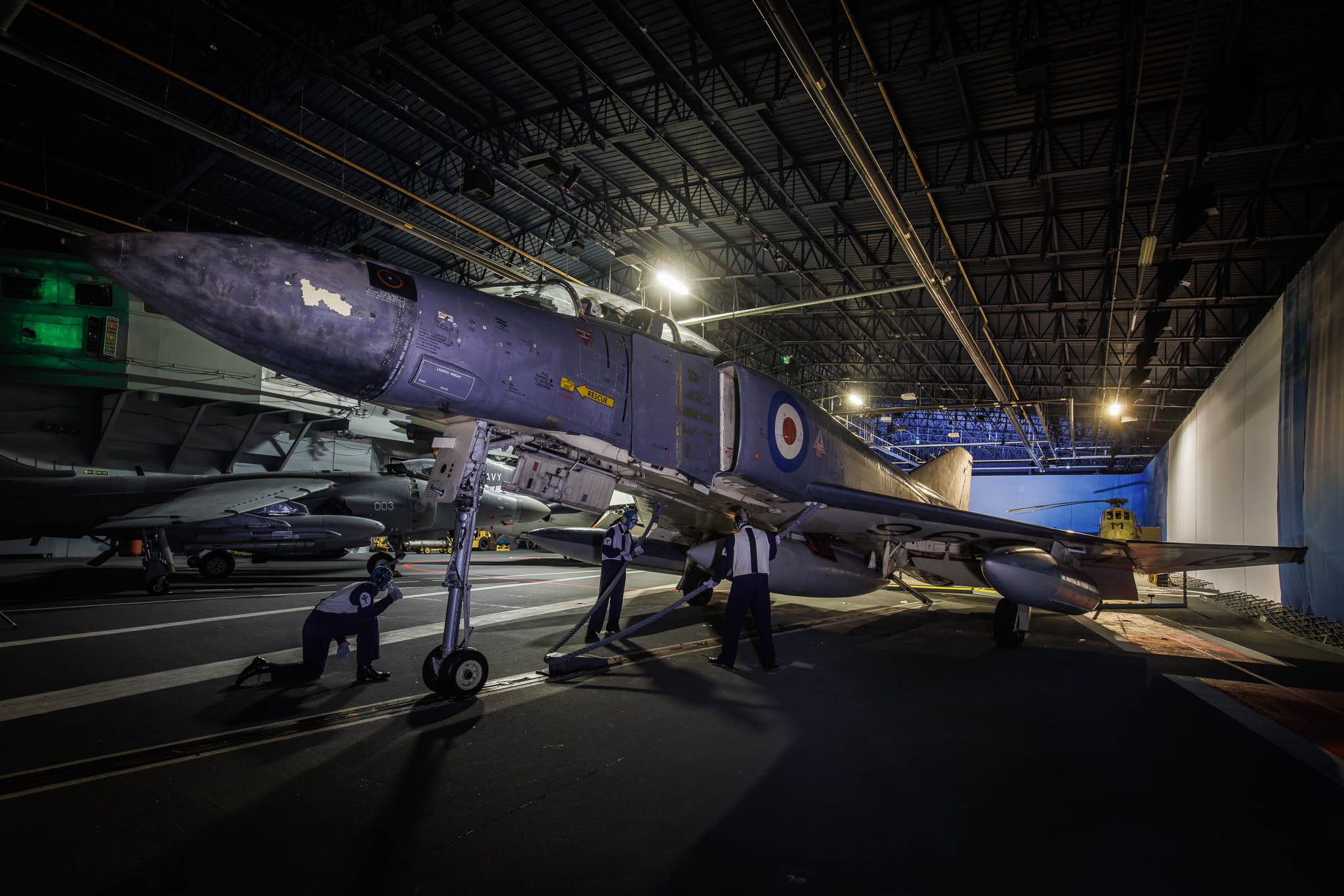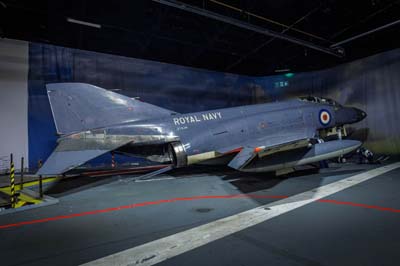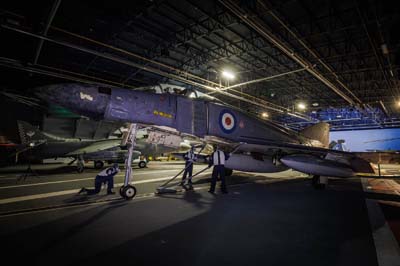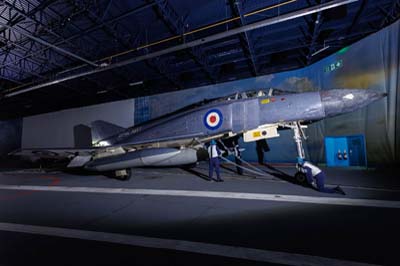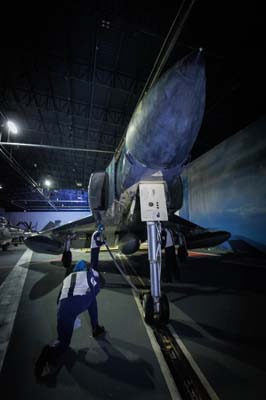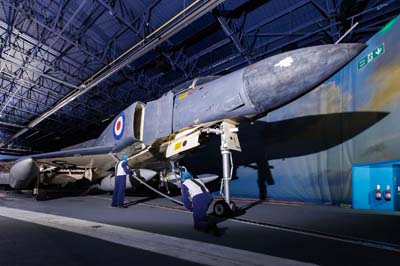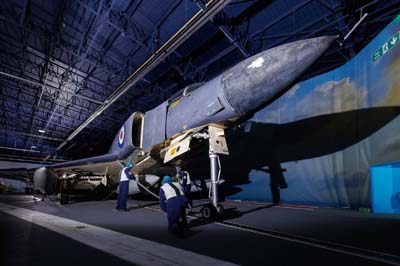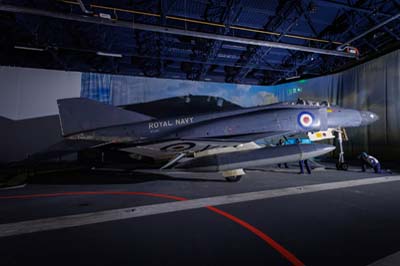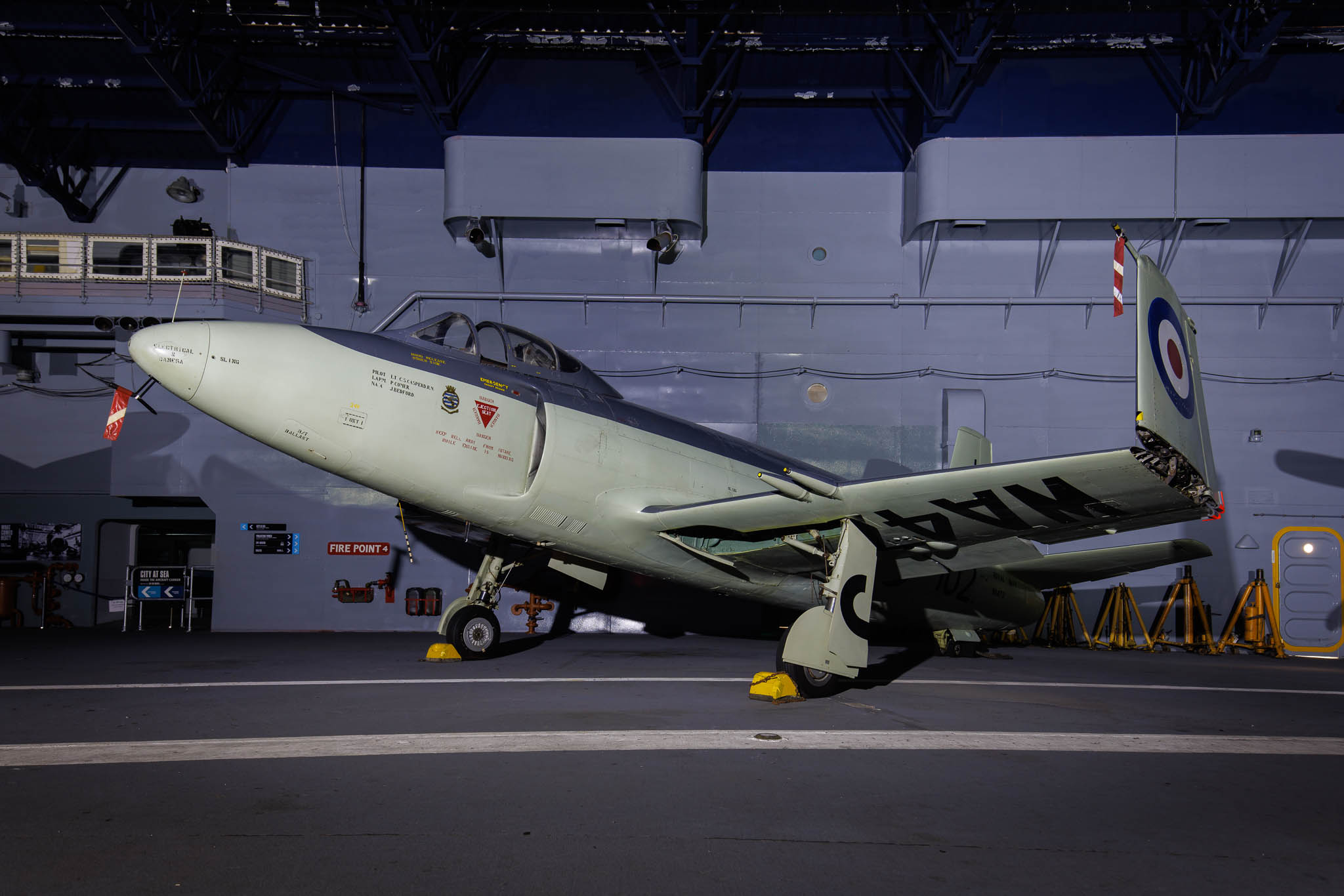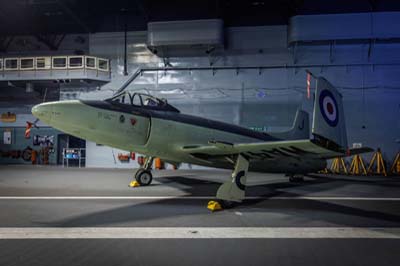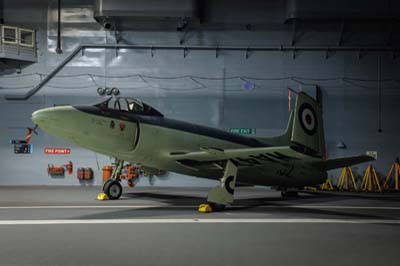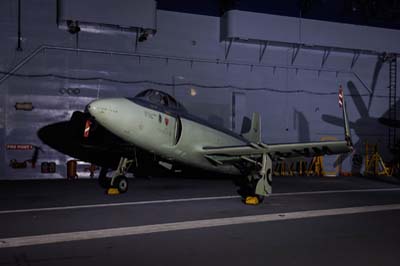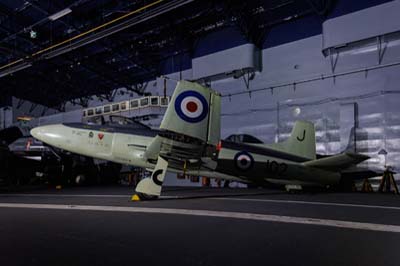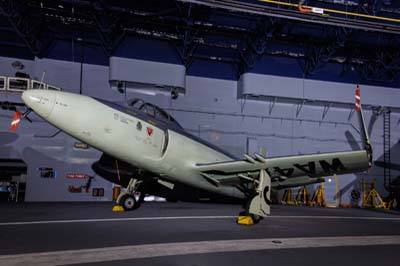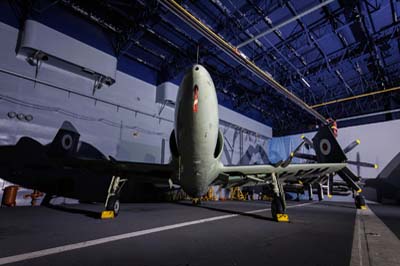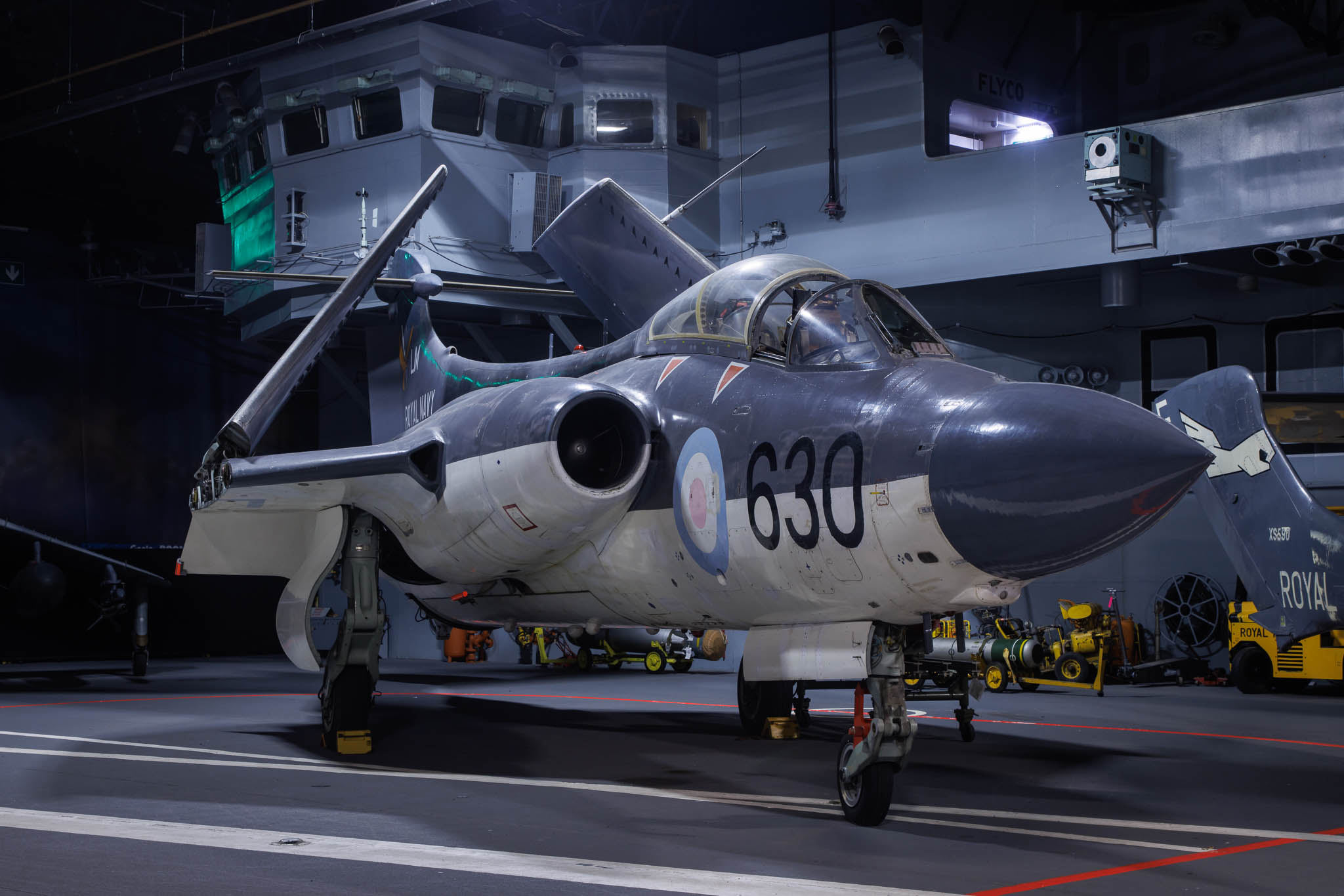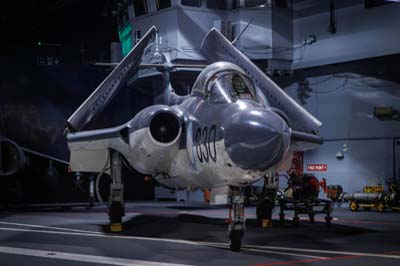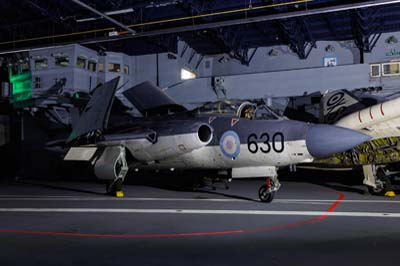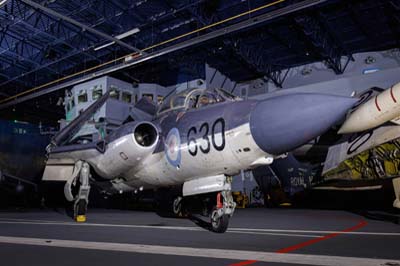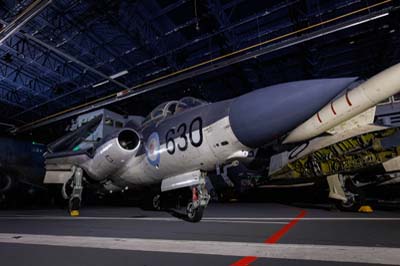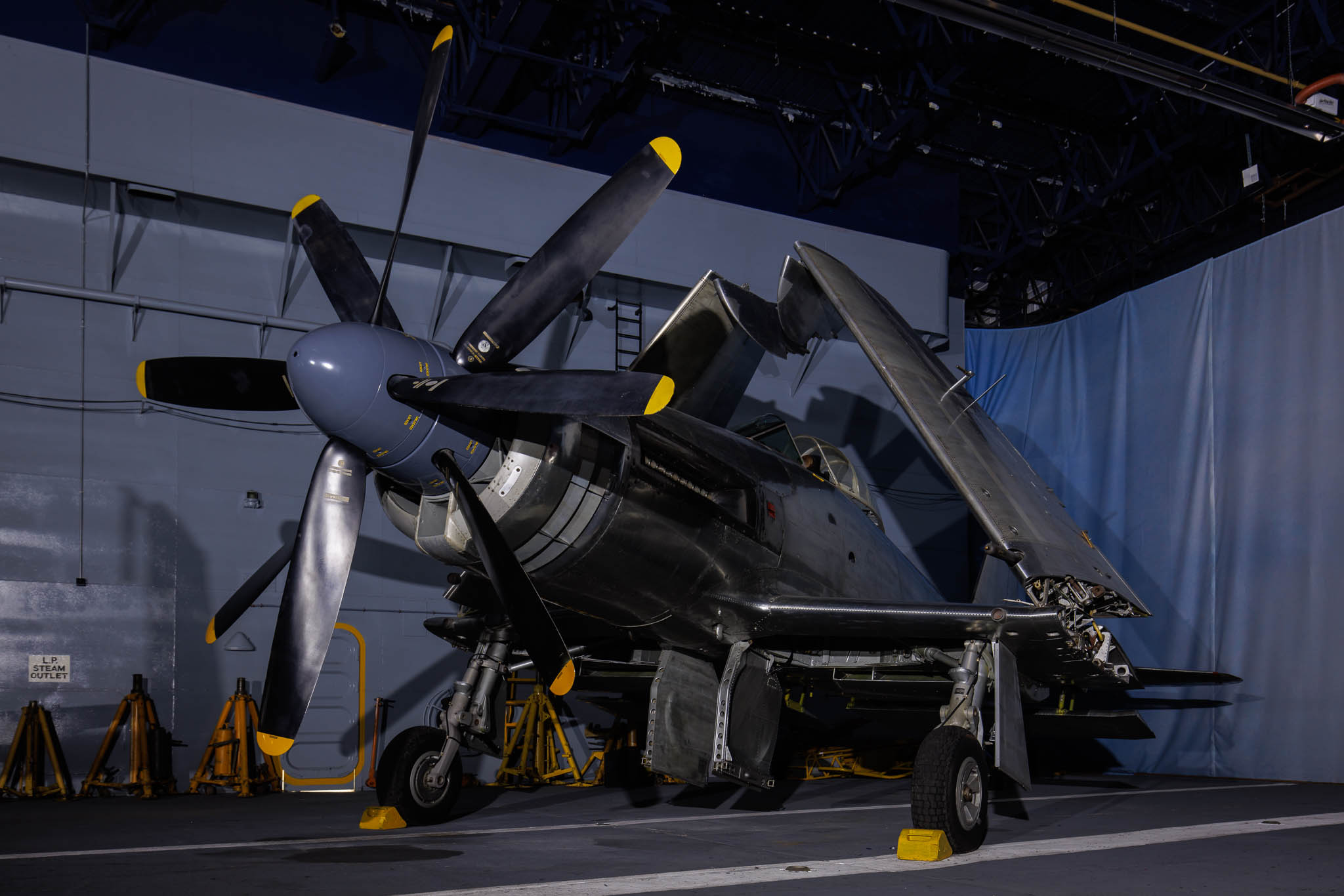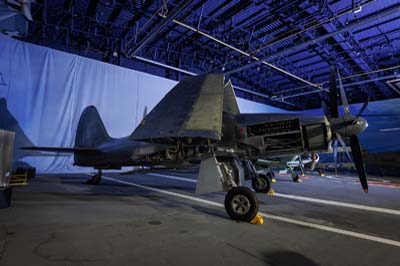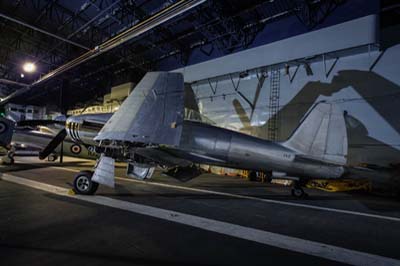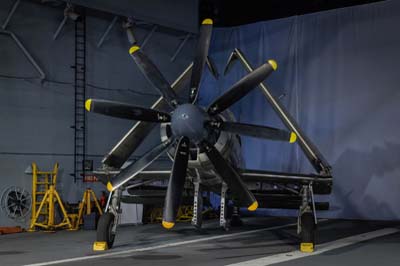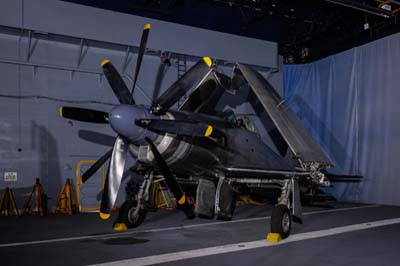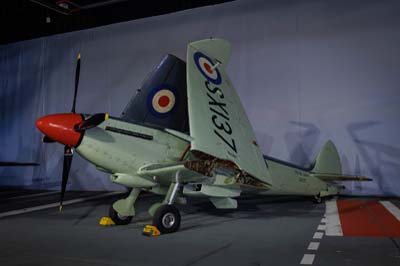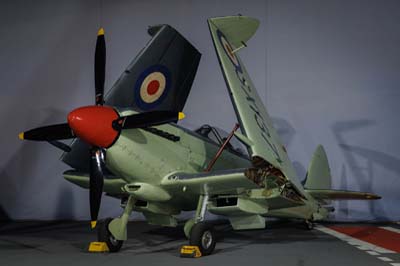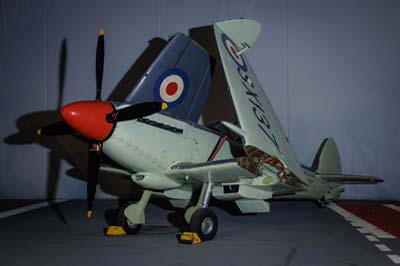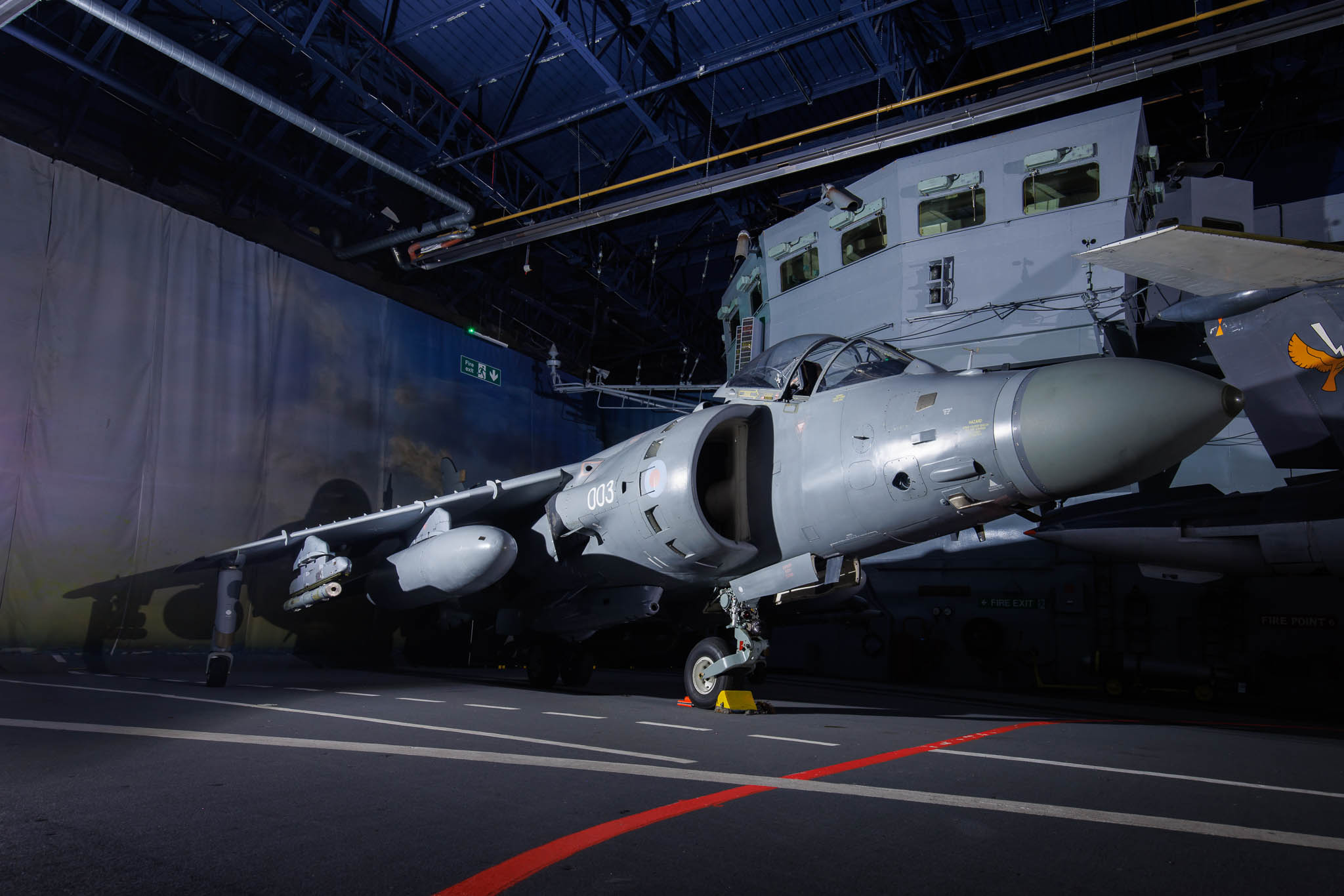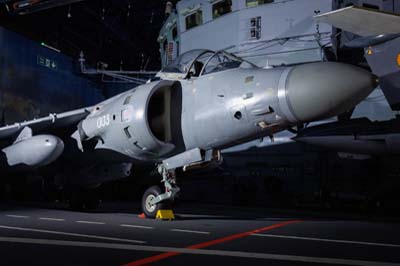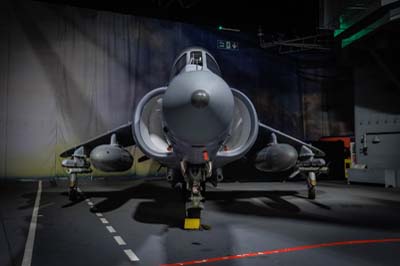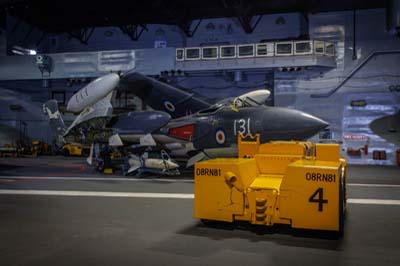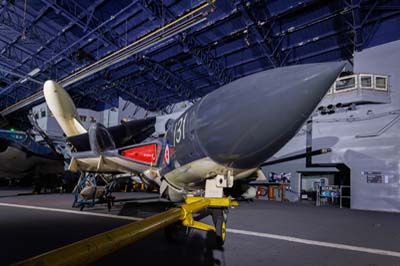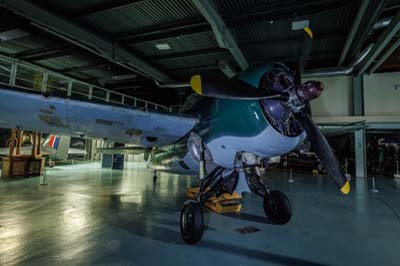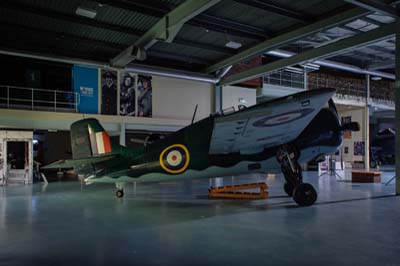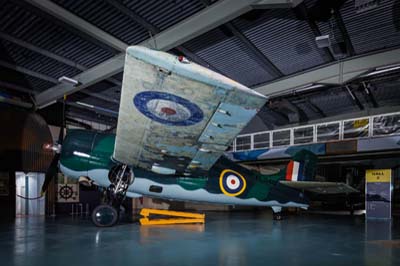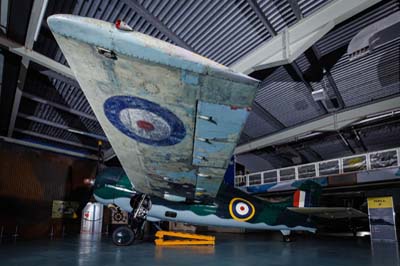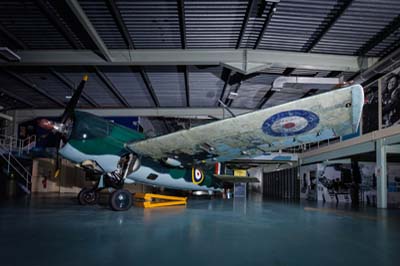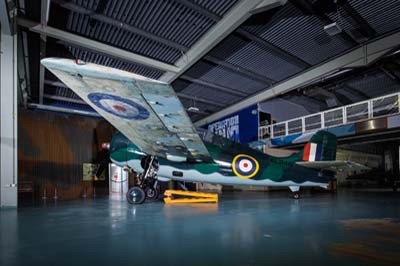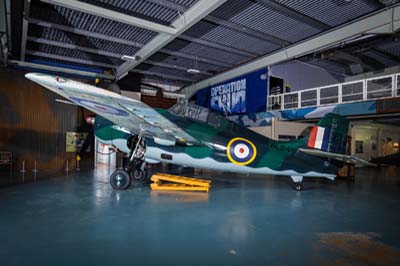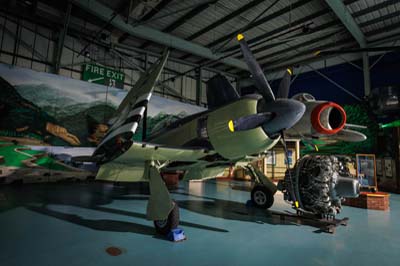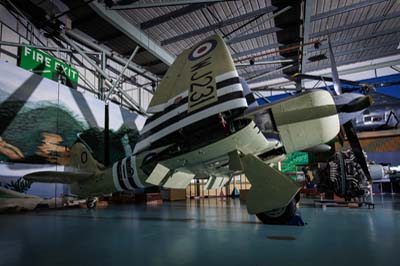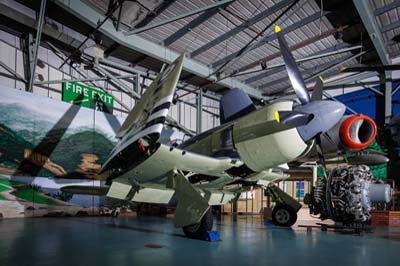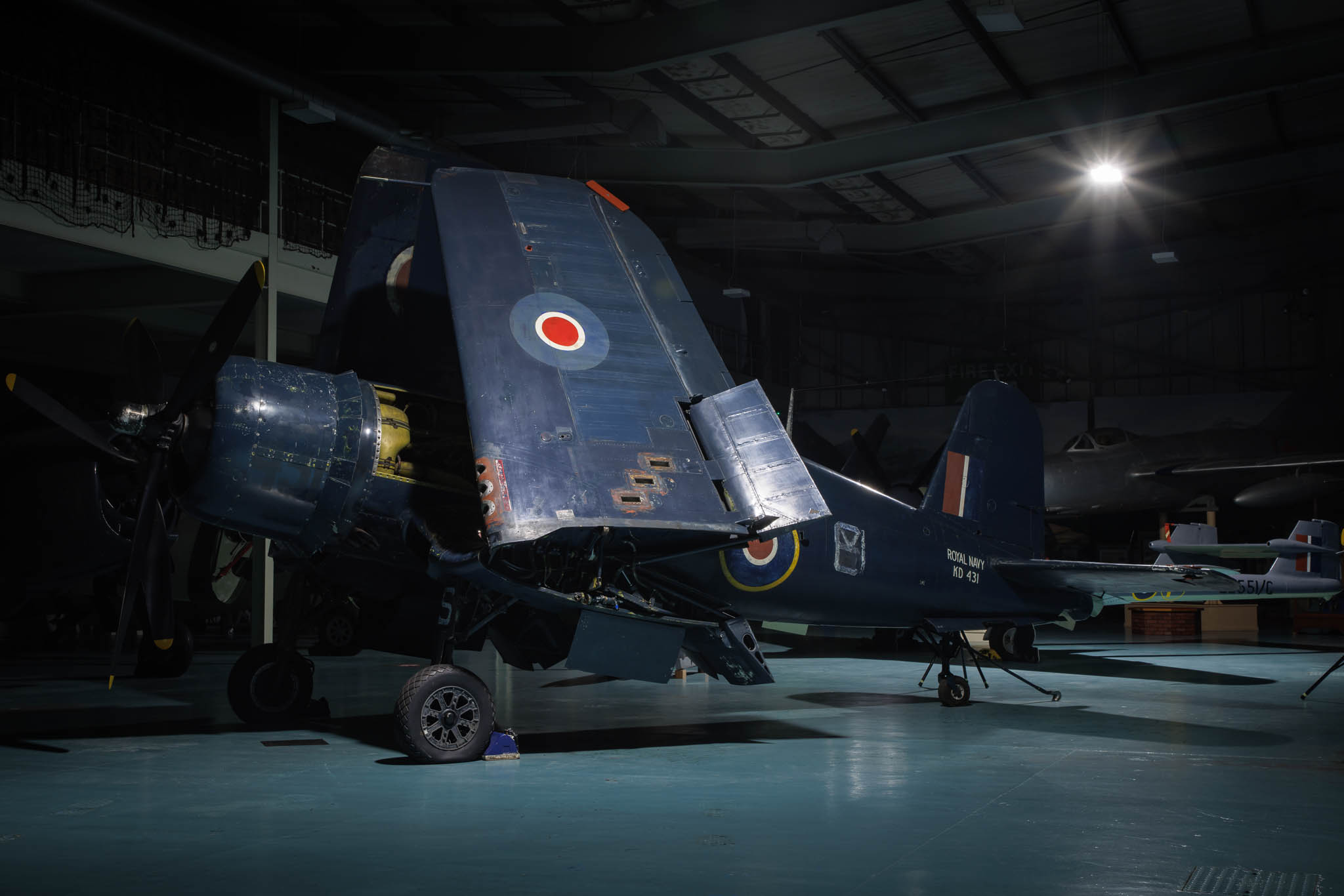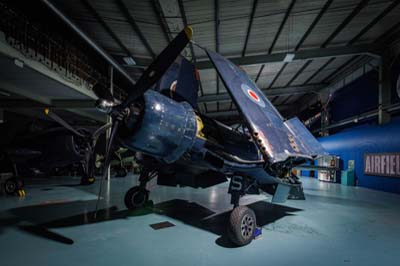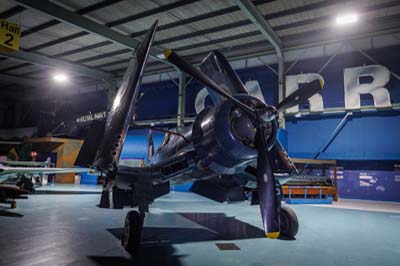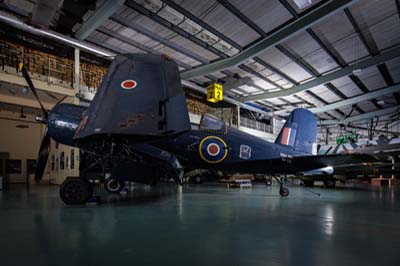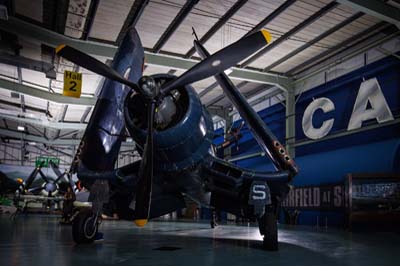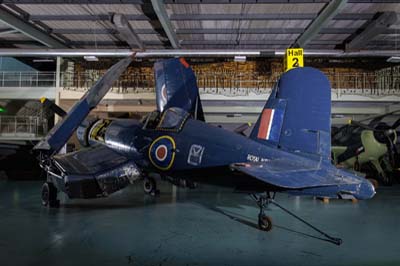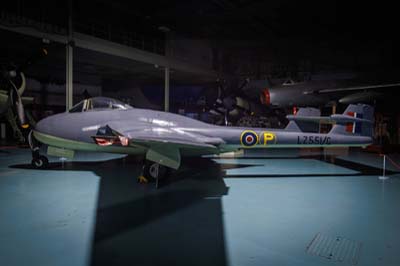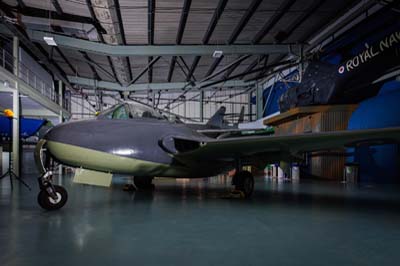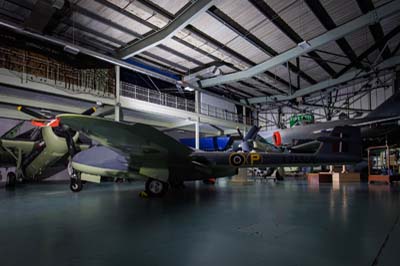Royal Navy Fleet Air Arm Museum - Night shoot
RNAS Yeovilton
November 2023
|
| Threshold Aero organised this museum night shoot. You might wonder why this would be any different to visiting the FAA Museum on any other day. The hangars (halls) are normally quite dark and you can use a tripod at any time. Well it was more special, the smaller more subtle lights are directed on the subject and the main roof lights are switched off. The small elastic rope barriers are all removed giving you unobstructed views of each aircraft. Other obstructions (clutter) were also removed. This event just covered halls 2 and 3. Whilst there were around 40 like minded photographers they did not get in each others way, as long as you patiently wait. |
| Left to right: McDonnell Phantom FG.1 (XT596) ex Royal Navy, this was the YF-4K prototype. |
| Left to right: Vickers Supermarine Attacker F.1 (WA473 'J-102') ex Royal Navy. |
| Left to right: Blackburn Buccaneer S.1 (XN957 'LM-630') ex Royal Navy. |
| Left to right: Westland Wyvern TF1 (VR137). Built at Yeovil in 1947 it was not flown but transferred to the College of Aeronautics at Cranfield as a training aid in 1950. To the FAA Museum in 1966. Moved to the Reserve Collection at Cobham Hall Store in 2012 before going on display in 2014. |
| Left to right: Supermarine Seafire F Mk.7 (SX137). Built at Yeovil by Westland Aircraft in 1945. |
Left to right: Sea Harrier F/A.2 (XZ499 '003') ex Royal Navy.
de Havilland Sea Vixen FAW.2 (XS590 'E-131') ex Royal Navy. |
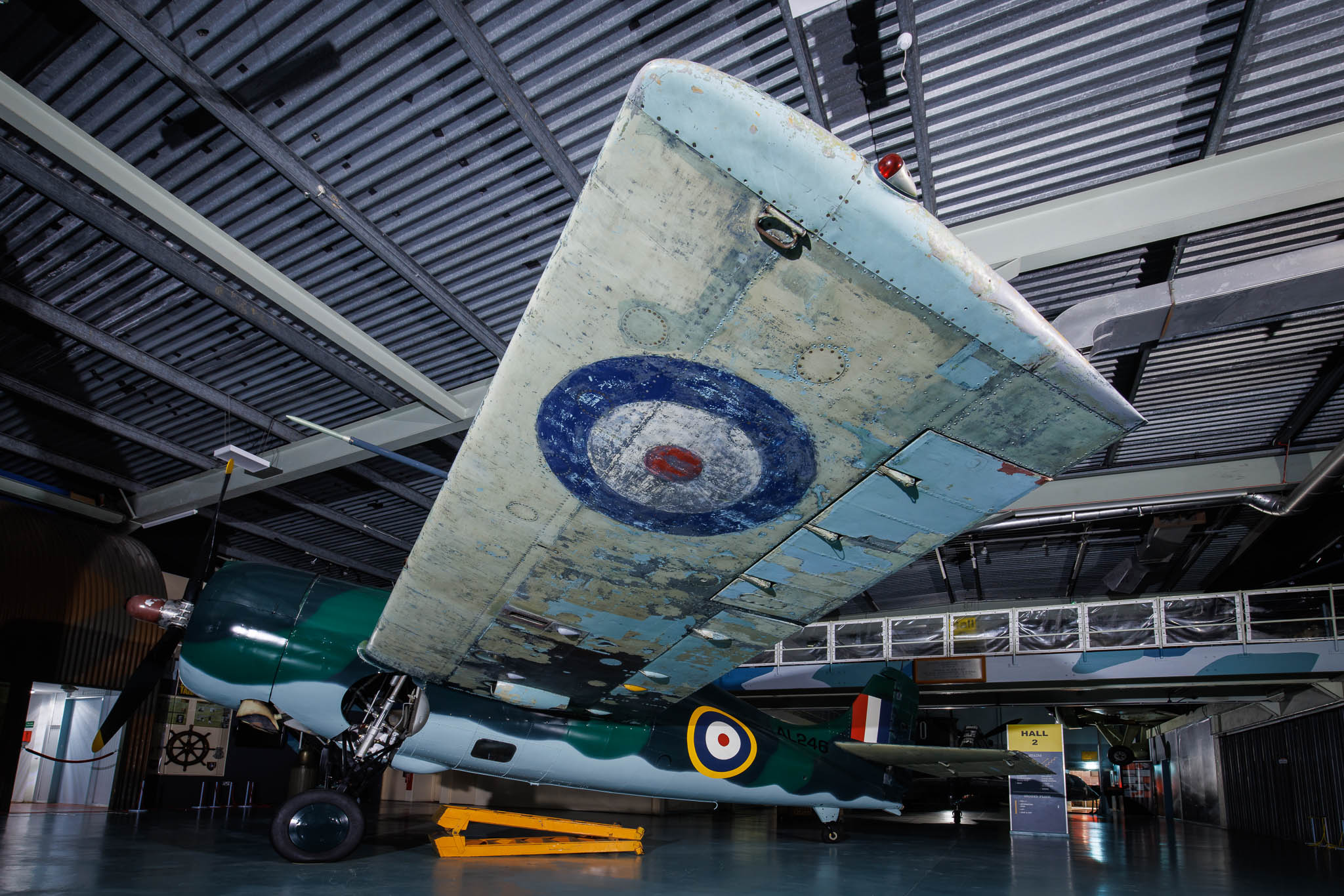 |
Left to right: Grumman G-36A (F4F-4) Martlet Mk.1 (AL246). The Grumman F4F Wildcat was ordered by France as the G-36A in early 1940. As France surrendered before any aircraft were delivered. The Royal Navy's Fleet Air Arm acquired 81 of the French Navy bound aircraft as the Martlet 1 to replace the Fairey Fulmar. They were delivered to the FAA in an odd Green and Green/Blue camouflage a US version of the FAA's dark slate grey and extra dark sea grey with sky blue undersides. The first Martlets entered Royal Navy service in August 1940, with 804 Naval Air Squadron, stationed at RNAS Hatston in the Orkney Islands.
The Martlet gained the first combat victory by a US-built fighter in British service in World War Two, when one shot down a Junkers Ju 88 over the Scapa Flow naval base in the Orkney Islands, Scotland on Christmas Day 1940.
From September 1941 802 NAS with six Martlets operated aboard the Royal Navy's new escort carrier, HMS Audacity. They effectively protected the convoys to Gibraltar, shooting down five Luftwaffe Fw 200 Condor bombers, before it was sunk by a German U-boat on December 21, 1941.
After the Martlet Vs were delivered the Royal Navy named future F-4F deliveries adopting the US designation as the Wildcat VI.
AL246 served at RNAS Donibristle and RNAS Machrihanish in Scotland and is the only surviving Martlet (F4F-4). From 1945 to 1960 AL246 was used as an instructional airframe at Loughborough College, Leicestershire. In 1963 it was transferred to the FAAM in its Royal Navy dark blue scheme. The FAAM have carefully restored AL246 in 2005 using the techniques first developed when restoring its Vought Corsair. This involved removing paint and coatings layer by layer to uncover its original paint scheme. The fuselage has now been repainted in the original US delivery colours from 1940, with the exception of the wings which have been left stripped of the Royal Navy applied paint. |
| Left to right: Hawker Sea Fury FB.11(WJ231 'O-115'). |
| Left to right: Grumman Corsair Mk.IV (KD431 'EZ-S' / 'E2-M'). Built by Goodyear in August 1944 as an FG-1A with serial 14862, it was transferred to the Royal Navy Fleet Air Arm under the lend lease program. Following retirement from service in 1946 KD431 was given to the College of Aeronautics at Cranfield as an instructional airframe. Acquired by the Historical Aircraft Preservation Society in 1963 it was transferred to the Fleet Air Arm Museum at RNAS Yeovilton. It was given a complete repaint over the original paint before it was put on display. In 1999 it was decided to remove the paint applied in 1963. By 2005 the paint had been removed to reveal the original wartime markings. |
| Left to right: de Havilland Sea Vampire Mk.10 (LZ551/G). On December 3, 1945, Captain Eric 'Winkle' Brown made the first-ever jet aircraft carrier deck landing by flying this de Havilland Sea Vampire onto the HMS Ocean. This modified Sea Vampire was equipped with a tailhook, a flap extension, and a longer-travel oleo leg for carrier operations. This event marked a major milestone in naval aviation, beginning the era of jet aircraft operating from aircraft carriers at sea. There were two prototype Sea Vampires (including LZ551) followed by 18 production Sea Vampire FB.5 fighter bombers and 73 Sea Vampire T.22 two-place trainers. |
